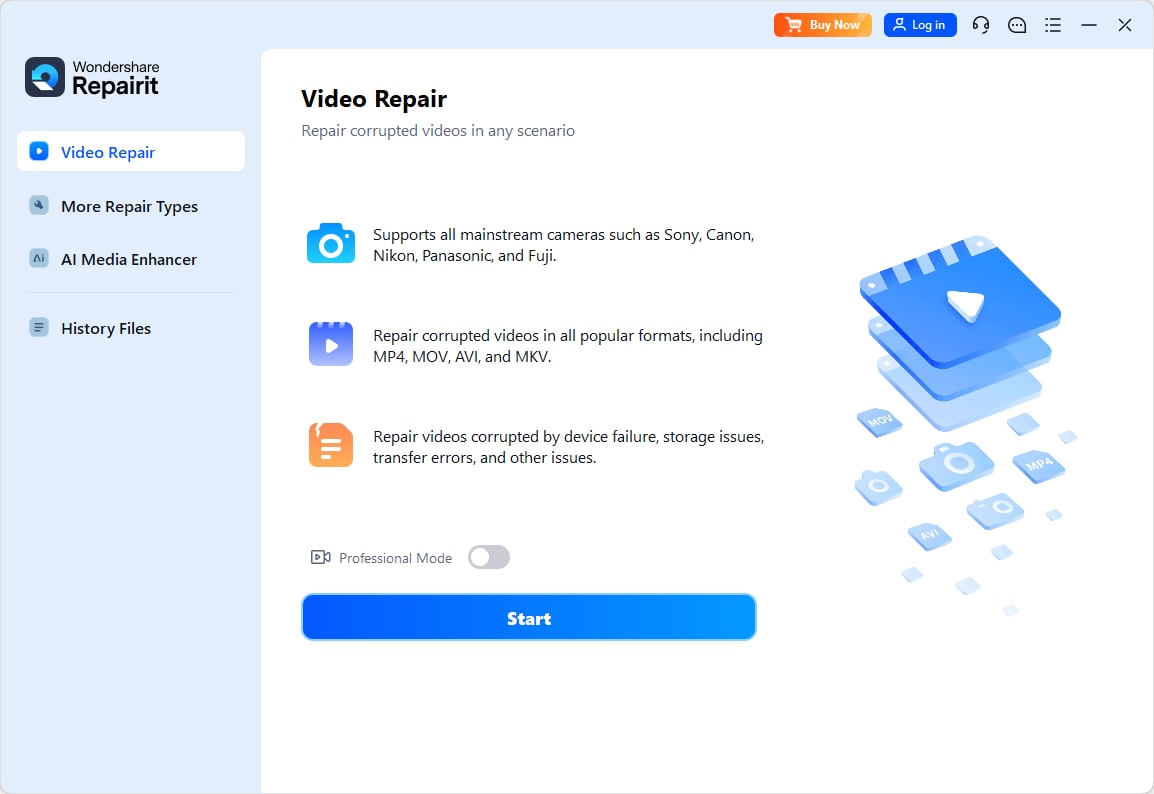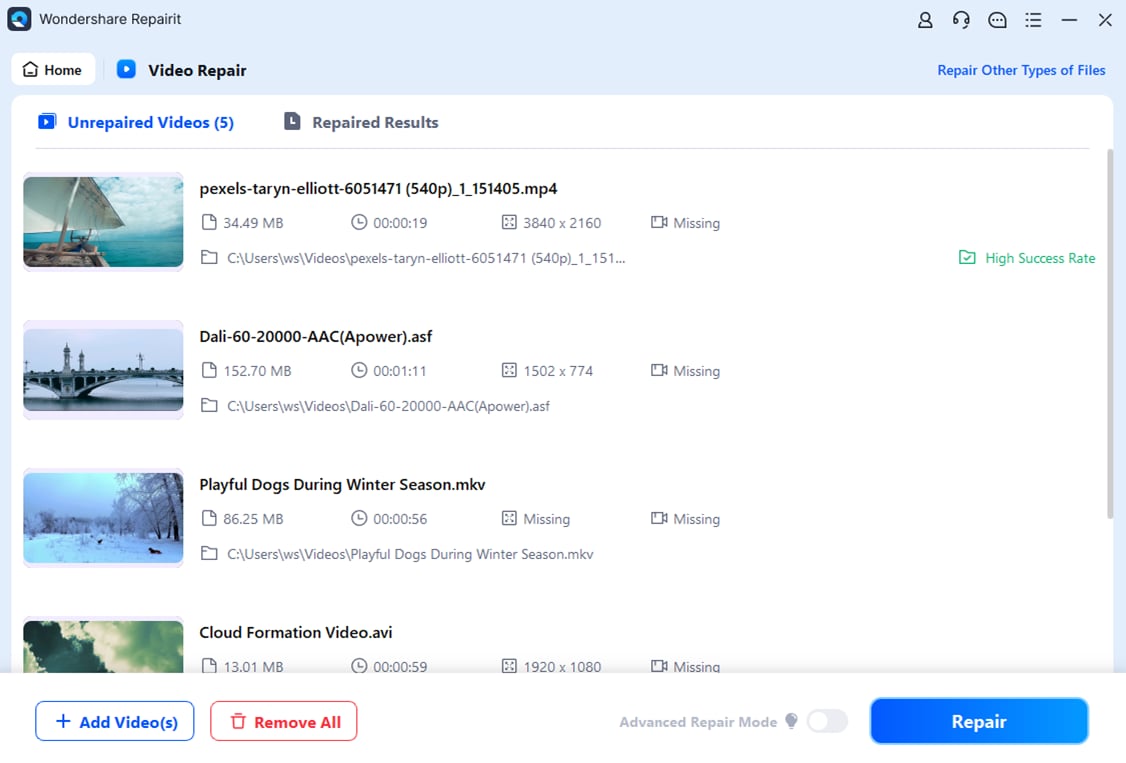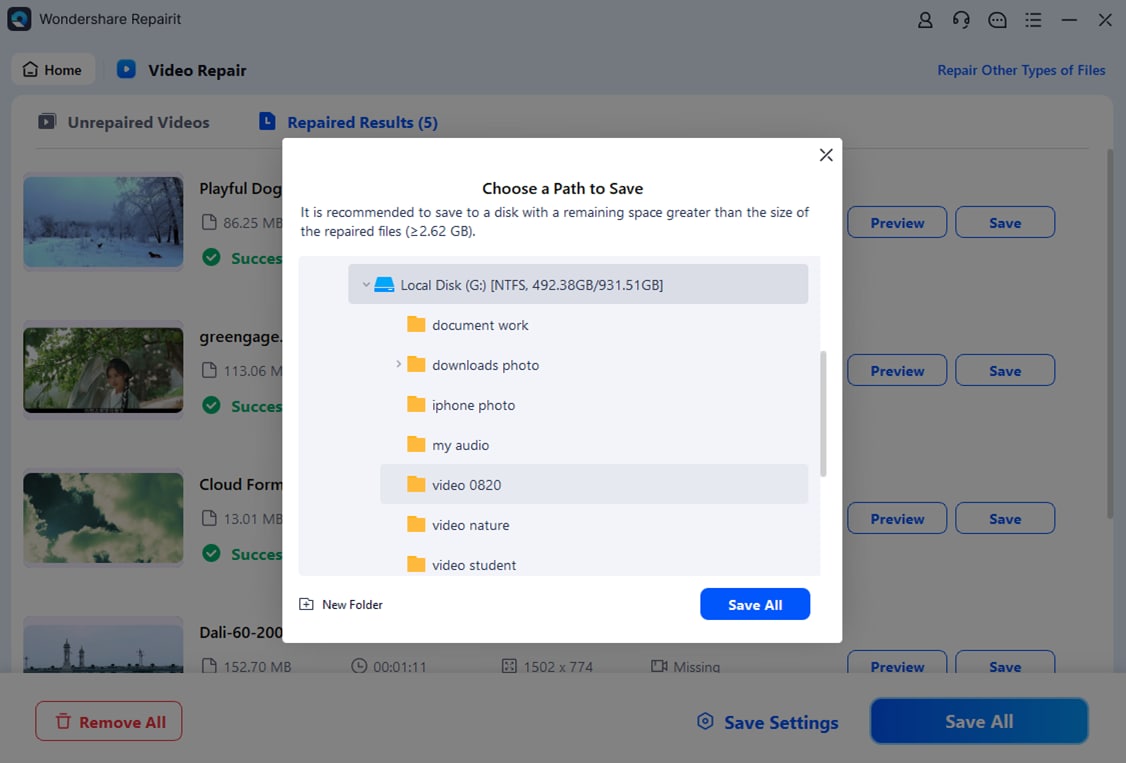Have you ever imported an AV1 video into DaVinci Resolve, only to see it look washed out or not work properly? Many creators face issues when trying to edit AV1 files in DaVinci Resolve. It is particular to gamers who record in AV1 using NVIDIA. The software doesn’t fully support AV1 yet, which leads to compatibility problems.
The good news is that there are solutions. No matter the issue, you can fix the AV1 Davinci Resolve problem with the right approach. This article will explain why AV1 causes issues in DaVinci Resolve. We will also provide reliable ways to make your AV1 videos work smoothly.
In this article
Part 1: Understanding AV1 Codec in DaVinci Resolve
AV1 is an open-source video codec developed by the Alliance for Open Media (AOMedia). It is designed to offer superior compression efficiency compared to older formats like H.264 and HEVC, making it an excellent choice for high-resolution videos, streaming services, and low-bandwidth environments.
Why AV1 Is Becoming More Popular?
- Better Compression Efficiency. AV1 reduces file sizes significantly while maintaining high image quality.
- Royalty-Free. Unlike HEVC, AV1 is free to use, which encourages wider adoption across different platforms.
- Future-Proof Technology. Many tech companies, including Google, Apple, and Microsoft, support AV1, ensuring its long-term viability.
Why AV1 Files Face Issues in DaVinci Resolve?
Despite its advantages, AV1 is still a relatively new codec, and many video editing programs, including DaVinci Resolve, have not fully integrated support for it. This means AV1 files might not be recognized or could cause playback and performance issues. If DaVinci Resolve doesn't support AV1 natively, you will need workarounds to edit your files properly.
Part 2: Challenges of Working with AV1 Codec in DaVinci Resolve
Since DaVinci Resolve lacks full AV1 support, several issues can arise when trying to edit AV1 files. Here’s a detailed look at the most common challenges:
1. Incompatibility Issues
DaVinci Resolve does not natively support AV1 for editing. If you try to import an AV1 file, the software might fail to recognize it, display an error message, or not import it at all. Even if the file does load, it may not function properly, leading to missing frames or audio sync problems.
2. Playback Errors and Lag
Since AV1 is a highly compressed format, DaVinci Resolve may struggle to decode it efficiently, especially on computers without dedicated AV1 hardware acceleration. This can result in slow playback, choppy video, lagging frames, or crashes during editing. The more complex the video, the worse the performance issues may become.
3. Rendering and Exporting Limitations
Even if you manage to edit an AV1 file in DaVinci Resolve, rendering can be a challenge. DaVinci Resolve does not offer AV1 as an export format, meaning you’ll have to convert your project into another codec like H.264 or ProRes. This extra step can increase file sizes, extend rendering times, or cause quality loss if not done correctly.
4. Corrupt AV1 Files
If your AV1 file is corrupted, incomplete, or damaged, DaVinci Resolve will likely reject it entirely. Corruption can happen due to improper file transfers, interruptions during recording, or encoding errors. Without repairing the file, you won’t be able to use it for editing.
Part 3: 5 Solutions for Working with AV1 Files in DaVinci Resolve
Working with AV1 files in DaVinci Resolve requires specific solutions depending on the issue. Whether your file is corrupt, unsupported, or causing playback problems, these five solutions can help:
1. Repair Corrupt AV1 Files with Repairit Video Repair
If your AV1 file is corrupted, DaVinci Resolve won’t be able to process it properly. This can lead to import failures, playback glitches, or missing frames. Instead of losing your footage, you can repair the file using Repairit Video Repair.
Why Use Repairit Video Repair?
- Fixes corrupted AV1 files, restoring them to a playable and editable state.
- Supports batch repair, allowing you to fix multiple damaged files at once.
- Maintains original video quality after repair, ensuring no loss of detail.
- Works with various video formats, making it a versatile tool for different projects.
- Ensures repaired videos are fully compatible with DaVinci Resolve, so you can import, edit, color grade, and render without issues.
Here are the steps on how to repair corrupt AV1 using Repairit Video Repair:
- Open the software and click +Add to import the corrupt AV1 file.

- Click Repair to start fixing the AV1 file.

- Preview the repaired video and click Save if it plays correctly.

- Import the repaired AV1 file into DaVinci Resolve for smooth editing.
Repair Corrupt AV1 Files with Repairit Video Repair

2. Convert AV1 Files to a Compatible Format
Since DaVinci Resolve does not support AV1 natively, converting AV1 files to H.264, ProRes, or DNxHD makes them easier to edit. These formats are optimized for smooth playback and editing without additional software conflicts. You can use online tools, like Convertio. Or software tools, like Movavi Video Converter, depending on what suits your needs.
3. Install Third-Party AV1 Codec Plugins
Some third-party codec packs include AV1 decoding support, allowing DaVinci Resolve to recognize AV1 files. Installing a reliable AV1 codec extension can help bypass compatibility issues without the need for file conversion.
Search for a trusted AV1 codec plugin, like K-Lite Codec Pack.

4. Use DaVinci Resolve’s Optimized Media Feature
If AV1 files load but cause slow playback or lag, you can use DaVinci Resolve’s Optimized Media feature. This function creates a temporary, lower-bitrate version of your video to improve performance during editing. It helps prevent lag without permanently converting the file.
Step 1: Open DaVinci Resolve and import your AV1 file (if it loads). Just go to File, select Import and pick Media. Then, click your AV1 video.

Step 2: Now, go to Preferences. Navigate to User and select Playback Settings. Then, enable Performance Mode. Adjust additional settings such as Hide UI Overlays and Minimize interface updates during playback to further improve performance.

Step 3: Go back to the interface and wait for DaVinci Resolve to process the optimized media.
5. Update DaVinci Resolve
Since software updates often bring new codec support and performance improvements, checking for the latest DaVinci Resolve version can help. Future updates may improve AV1 compatibility, reducing the need for extra steps.
Method 1. Open the software. Click DaVinci Resolve and select Check for updates. If there is, install it and restart DaVinci Resolve once done.

Method 2. Navigate to DaVinci Resolve official website. Pick from the Free or Studio version you want to download. Once downloaded, install DaVinci Resolve on your device.

Conclusion
AV1 is a powerful codec that delivers high-quality video with better compression. However, DaVinci Resolve does not fully support AV1. It leads to compatibility and playback issues. The good news is that you can still work with AV1 files by using one of the solutions mentioned in this article.
If your AV1 file is corrupted, Repairit Video Repair is the tool to fix it and ensure smooth editing in DaVinci Resolve. With the right approach, you can edit AV1 videos in DaVinci Resolve without frustration and create high-quality content.
FAQ
-
Does DaVinci Resolve support AV1 export?
No, DaVinci Resolve does not currently offer AV1 as an export format. This means you cannot directly save your edited videos in AV1 within the software. Instead, you need to export your project in a different format, such as H.264, ProRes, or DNxHD. -
What is the best format to convert AV1 files for DaVinci Resolve?
Since DaVinci Resolve does not fully support AV1, you must convert AV1 files into a format that works well with the software. The best options are:1. H.264 (MP4): This is the most widely used format, offering a good balance between file size and quality. It works smoothly in DaVinci Resolve and is compatible with almost all devices.
2. ProRes: This Apple-developed codec is designed for professional editing. It maintains high image quality while ensuring smooth playback and minimal lag during editing. However, ProRes files are large.
3. DNxHD/DNxHR: These are high-performance codecs developed by Avid. They are optimized for video editing and provide excellent quality with lower system strain compared to compressed formats like AV1.
-
Are there AV1 codec plugins for DaVinci Resolve?
Yes, some third-party codec packs can enable AV1 playback in DaVinci Resolve. These plugins help the software recognize AV1 files, but they do not guarantee full compatibility. Popular AV1 codec solutions include:1. LAV Filters. This is an open-source codec pack that adds AV1 decoding support to various media players and software. Installing LAV Filters might allow DaVinci Resolve to recognize AV1 files, but performance may vary.
2. K-Lite Codec Pack. This comprehensive codec pack includes AV1 support along with many other video and audio formats. It can help resolve playback issues in Windows-based software.
3. FFmpeg Libraries. Some advanced users integrate FFmpeg’s AV1 decoding capabilities with video editing tools. This method requires manual setup and technical knowledge.


 ChatGPT
ChatGPT
 Perplexity
Perplexity
 Google AI Mode
Google AI Mode
 Grok
Grok
